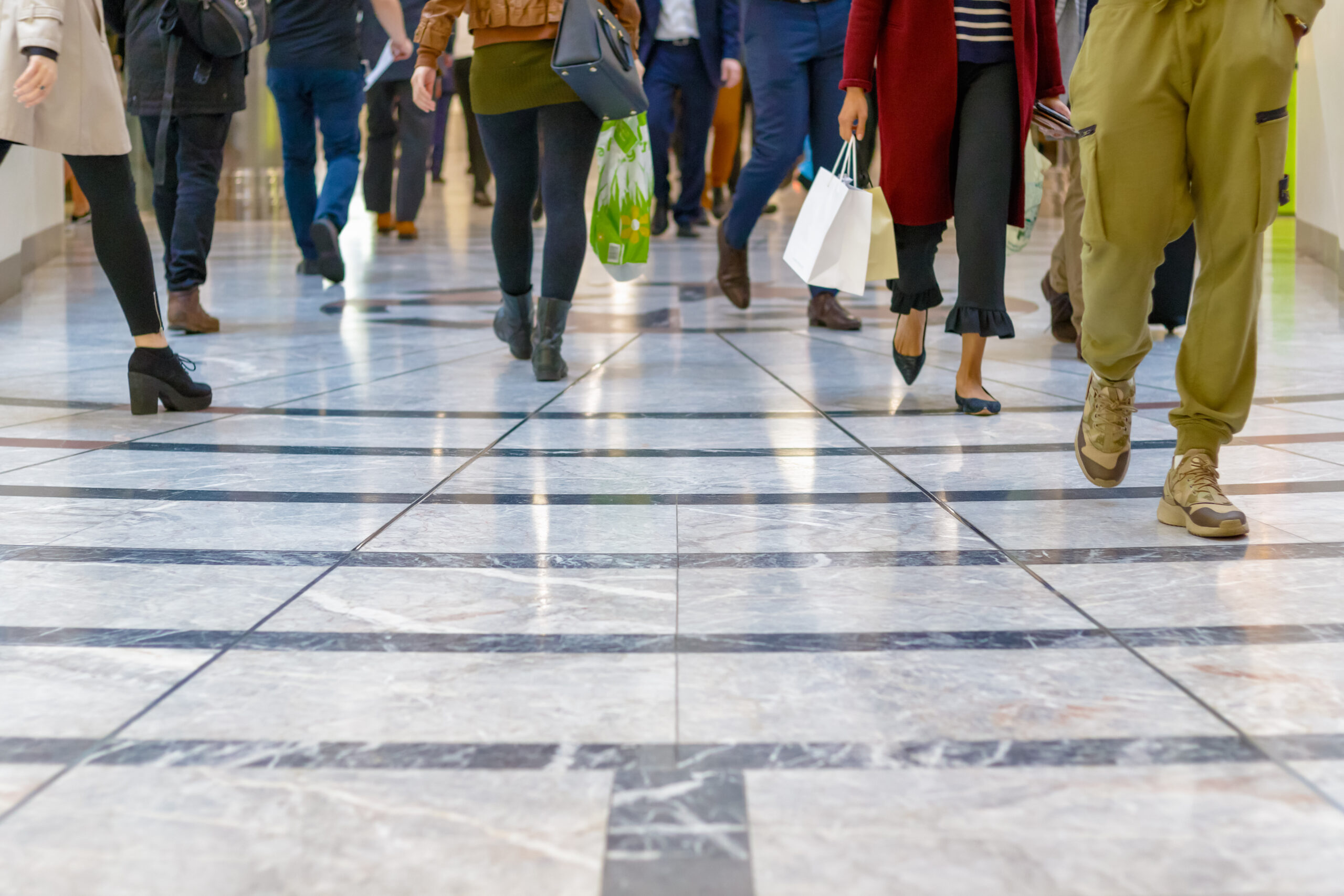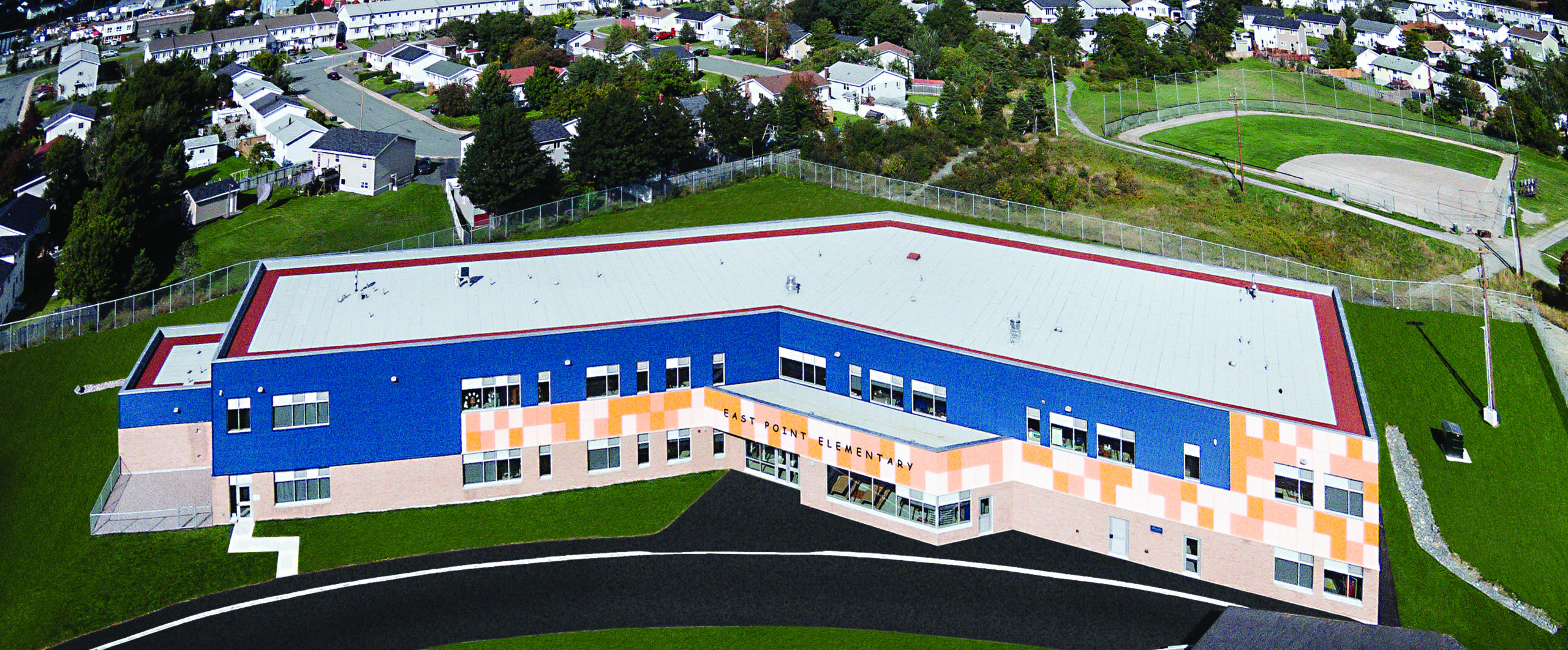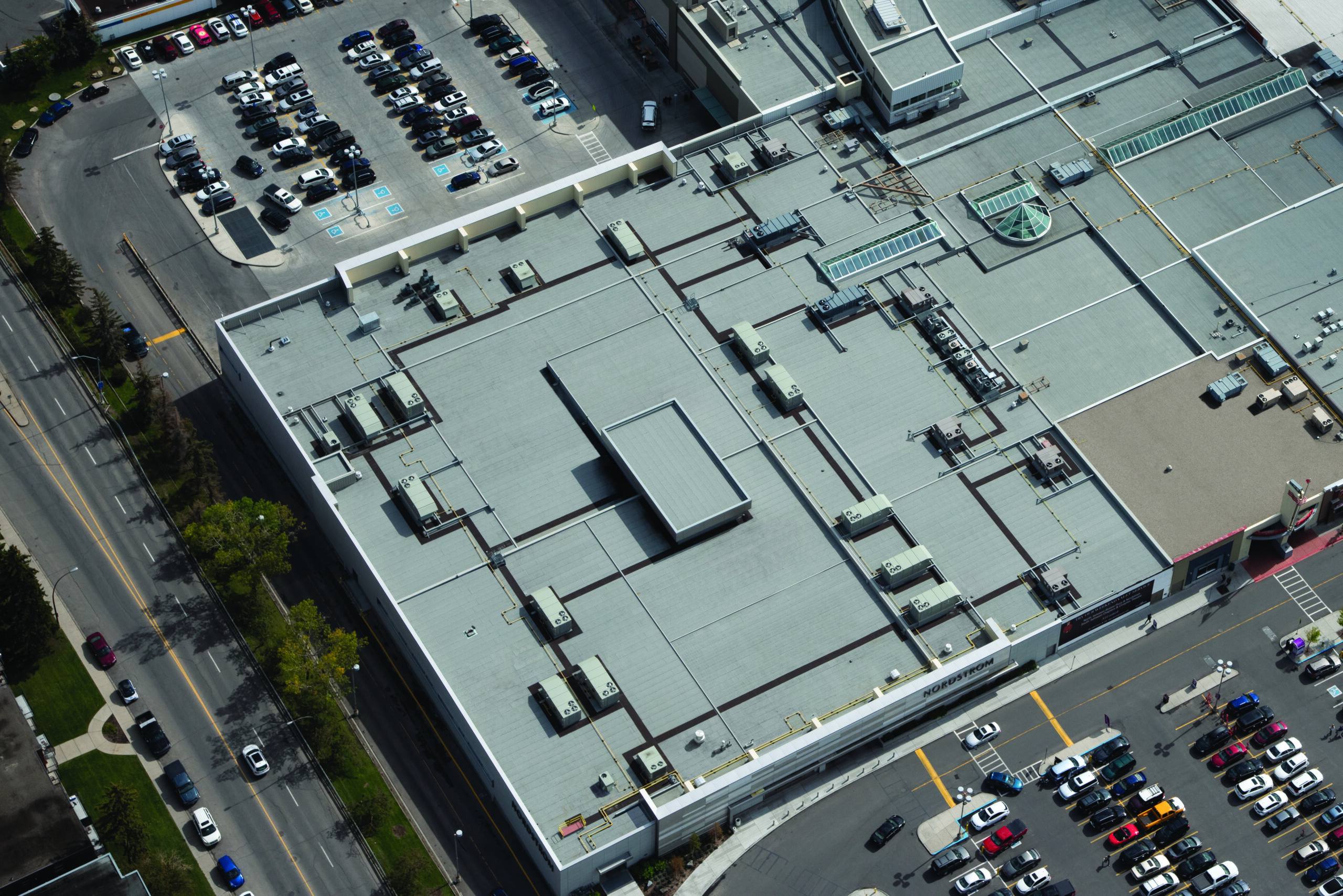This article provides general information only and is not a substitute for proper safety training and evaluation of each job site for specific safety challenges. Please also check any state, provincial, territorial or federal laws that may be applicable in your area regarding ladder usage, working at heights and safety protection requirements.
There are always safety concerns with any form of commercial roofing. However, some building types face more roof safety challenges than others. For example, schools present the challenge of roofing with children in the vicinity. Malls and other public buildings are accessible to the public, at least during daylight hours, meaning roofers working on these buildings need to protect these bystanders. Data centres and industrial buildings face other unique challenges, such as sensitive electrical equipment.
Roofers who come prepared for commercial roofing safety challenges will provide better service, avoid workplace accidents and save themselves the time and expense of adjusting for unsafe conditions on-site. Building managers, property owners and other stakeholders should work closely with roofers to address safety concerns. Doing so may mitigate their liability and should keep people and property safe. Below, we’ll offer tips for both commercial owners and property managers on sharing and managing the risks associated with commercial roofing at buildings with unique safety challenges.
Table of Contents:
- Know the Local Safety Regulations
- Speak With Your Point of Contact
- Identify Possible Commercial Roof Hazards
- Protect Building Occupants and the General Public
- Use Safety Precautions Specific to Your Materials and Processes
- Safety for Roofing at Schools
- Safety for Roofing at Malls
- FAQs on Commercial Roofing Safety Precautions
- Promoting Commercial Roofing Safety
Know the Local Safety Regulations
Experienced commercial roofing teams will already know the basic safety requirements applicable in their area. They should have commercial roofing safety checklists that they use for routine jobs. However, they may not realize that national and local governments and safety organizations may have more specific safety requirements for work done on specific buildings. For example, when performing construction work at schools, the City of Toronto provides a list of guidelines. One that applies to roofers is that if they wish to place a dumpster in a school loading zone, they will also need to have a police officer on-site to redirect traffic around the dumpster.
The regulations that you encounter will vary widely, but they may include limitations that roofers do not usually include in their commercial roofing safety plan, including:
- Limitations on work hours.
- The requirement to provide notice to the general public.
- The need to add pedestrian control barriers.
- The need to create a specific safety committee for the project.
- The requirement to create written emergency guidelines.
Commercial roofing contractors need to be familiar with applicable occupational health and safety legislation and regulations, and safety compliance in accordance with the Canadian Standards Association. In addition, roof safety guidelines from your national or local roofers’ association may be helpful. One excellent resource is the Canadian Roofing Contractors Association. Their roofing reference manual provides safety information for a wide range of roofing industry concerns and can help you find the information for your province.
Speak With Your Point of Contact
Communication between the client and the commercial roofer is essential to ensure that all safety concerns are understood by both parties and addressed properly. For simplicity, commercial roofers should strive to have a single point of contact for the building they are working on. At a school, your point of contact may be the principal. The stakeholders or owners of other commercial buildings should choose one person in their organization who oversees liaising with your roofers and communicating all safety information to others.
Together, the roofers and the client’s point of contact should discuss the specific safety requirements they can foresee for the building. The client should provide any documentation about what they require from the roofer. For example, school boards may have safety checklists for roofers or for any contractors who will work at the school. Those who own a mall might be concerned about the financial impact of roofing work on their tenants. Data centre managers might be worried about the roof’s impact on the ability of the building to shed heat — an essential safety and performance function. In this case, roofers can offer to avoid blocking vents or HVAC equipment, even temporarily.
In general, the commercial roofer and client should discuss and plan for these commercial roof safety concerns:
- The timeline for the project, including if the building will be open during work.
- Where roofers will access the roof and how those areas will be secured.
- Where garbage disposal will be placed and how debris will be safely dropped into it (chutes are often used).
- How equipment, such as ladders or propane tanks, will be secured.
- How occupants or the public will be alerted to and protected from the roofing work. See more on public access concerns below.
Identify Possible Commercial Roof Hazards
Roofers working on any commercial building should conduct a survey of their workspace to look for potential roof hazards. This includes:
- The location of power lines.
- The presence of overhead obstructions for hoisting.
- The location of HVAC equipment on the roof.
- The location of other roof projections and features.
If the roof is in poor condition, roofers may also need to assess if the roof can withstand structural stress and roof loading. This is especially important in buildings that must remain occupied while they are undergoing roofing work, as a potential collapse would be a serious concern.
Protect Building Occupants and the General Public
Commercial roofers may be used to working on office buildings, retail stores and other small buildings where the roofers can complete the work during off hours or where the building can be temporarily closed during the process. However, if the property you’re bidding on will be open while you do your work or will be close to a public way (a sidewalk or road), your roofing team will need to take steps to protect the public from your project. Each jurisdiction has different requirements in terms of protecting the public, and you will need to determine the requirements for your specific area.
Use Safety Precautions Specific to Your Materials and Processes
When planning a commercial roofing job, you should not only consider the specific materials you’ll need, but also the operating procedures you’ll have to implement to accommodate the specific needs of each respective job site, be it a school, a mall, a data centre, or another job site. When predicting the potential safety hazards of your work, consider:
- Material and equipment delivery: Where will you store materials and equipment? Does the facility’s own equipment need to be moved to allow you to store yours? Do you need fencing, signs or warning barriers to protect your own team members as well as the public? Plan to secure the resources and staff you’ll need.
- Material and equipment storage: Ensure you have enough straps, locks, or storage to secure your materials and tools. Pay special attention to the unique storage needs of certain tools and materials. For example, propane cylinders need to be kept away from traffic and from potential sources of ignition. When not worn, all personal protective equipment, including PFAS, need to be secured so the public cannot access them. When not in use, ladders should be stored securely in a horizontal position. It may be necessary to remove them from the work site at night.
- Garbage disposal: Consider where you will place your garbage disposals and if you have enough chutes of the correct length to accommodate all the containers you plan for.
Safety for Roofing at Schools
Schools always present a unique challenge for roofing because it’s highly likely that children will be on the property even when school is not in session. Extracurricular activities often occur in the evenings, summer school classes are held even when school is “out” for the summer. Neighbourhood children may also take advantage of the school’s grounds to play after hours. It is the responsibility of the school’s officials and the commercial roofer to ensure that children are protected. Together, both need to plan for children’s natural curiosity.
Some of the safety considerations for roofing at schools include:
- Perform work when school is not in session: When possible, schedule roofing work during summer or at times when fewer children or adults will be on the premises. Virtual learning may enable principals to shut down their schools when roofing work, especially emergency work, is required. Roofers who need to work while school is in session should avoid working during drop-off and pickup times and should avoid working at the roof’s edge during recess or lunch.
- Require roofers to have background checks: Some school boards require that contractors who work on their property complete a background check.
- Prevent child access to the roof and to equipment: Fencing should separate children from all roofing tools and materials, as well as all roof access points. Fence gates should always be locked unless directly supervised by a roofer or a school employee.
- Designate spotters for dangerous areas: Where fencing will disrupt the flow of traffic (including pedestrian traffic) around a school, there should be a dedicated spotter to direct traffic and help children avoid the hazard. In some areas, safety regulations may require a police officer to fulfill this duty.
Policies for contractors’ work at schools vary by province and school board. As a roofer, it is wise to get access to these requirements as soon as possible so you can plan. Tasks like ordering police background checks for your workers and scheduling additional staff to supervise your equipment can take time.
There are also responsibilities that school officials can take on to make children safer. Many choose to hold assemblies to tell children about the roofing work, encourage them not to approach roof access points or equipment and reassure them about the presence of people they don’t know on the school’s roof. Schools may also choose to post a teacher near a roof access point during recess or lunch to ensure children are not tempted to climb the fence or cause mischief.
Roofing work on schools often presents challenges to school boards and stakeholders, but that should not deter you from arranging regular maintenance, repair and reroofing work.
Safety for Roofing at Malls
A mall presents a unique challenge for roofers. These are large buildings that require a great deal of roofing work, but the general public has access to them through all hours of the day. This means that roofers need to protect the public from their work and might even consider roofing at night to reduce disruption to both themselves and to the retailers inside the mall.
Public way considerations, which were mentioned above, will be especially important for roofing work at malls or other large retail buildings Also, there should be ample signage to warn the public about the roofing work and its related hazards.
Stakeholders and owners of these buildings should ensure that they have emergency evacuation procedures in place in case there is a serious safety issue with the roof or building.
Additionally, commercial roofers may consider roofing at night in order to minimize their disruption to the building. However, night roofing has its own safety concerns that roofers need to address, including:
- Visibility: At night, even with artificial lighting, visibility is not as good as it is during the day. Visibility issues will compound other risks. You should set up barriers around the illuminated area, have roofers wear reflective clothing and install guardrails over skylights, entrances, ladders and hoist locations.
- Alertness: People who work at night may be less alert and may therefore be more prone to accidents. This is especially true of workers who have worked during the day, which is why it is important that roofers do not work overtime in back-to-back shifts. In the case of workers who are just not used to night work, they should be encouraged to adopt healthy sleep habits and ensure they know the site plan and their safety training well.
- Electrical hazards: Introducing artificial lighting is necessary, but the cords may be trip hazards, and the lights may be electrical hazards. To offset this, use lighter, portable lights that are rated for outdoor use.
FAQs on Commercial Roofing Safety Precautions
- 1. What are common rooftop safety hazards?
- When working on a roof, roofers need to deal with many safety hazards, such as working at heights, working with hot equipment, material loading and accessing the roof. Roofers also need to consider roof projections, such as skylights and plumbing vents, to be potential trip hazards.
- 2. What type of protection would you need when working on the roof of a building?
- Roofing professionals use a wide range of protection when they work at great heights and with potentially dangerous equipment. Some of these include guardrails or barriers around the edge of the roof, safety nets placed under the work area, and personal fall protection systems.
- 3. How can you reduce the risks associated with working on roofs?
- It is a complex process to reduce the risks associated with roofing, and no single answer could suffice. Reducing risks involves understanding and preparing for the specific risks at each job site and using safety equipment and best practices to reduce risks as much as possible. Inexperienced roofers should be safety trained and may also partner with experienced roofers to learn. If you come across a new risk or a new situation, there are regulatory and safety organizations that can direct you.
Promoting Commercial Roofing Safety
The safety of roofers, tenants, guests, students and the public all depend on good communication and problem-solving between commercial roofers and their clients. Without information from the client, commercial roofers may not understand the risks and concerns unique to the building they are working on. That said, experienced commercial roofers can also guide clients through the usual safety concerns and can make recommendations on how most risks can be mitigated successfully.




